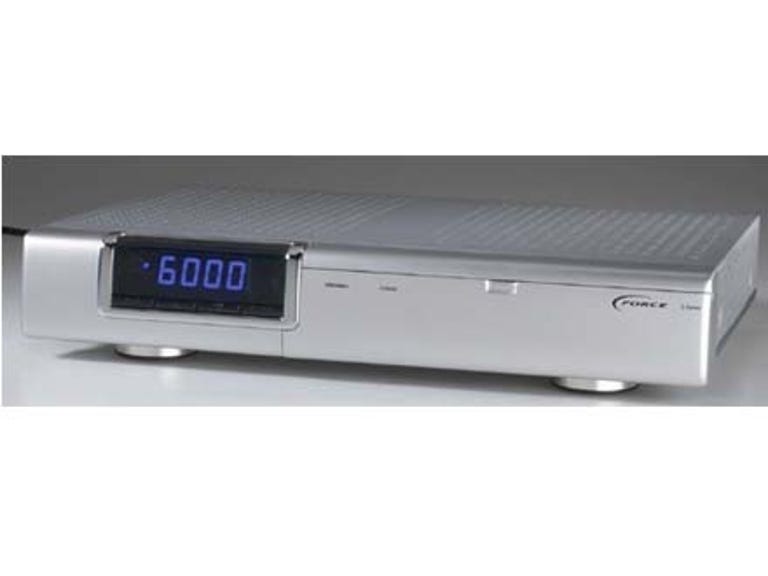 Why You Can Trust CNET
Why You Can Trust CNET Force 5 Digital Receiver review: Force 5 digital receiver
The Force 5 is an affordable, entry-level digital receiver with a large hard drive and intuitive menu interface. A great buy if you can get past the lack of HD support and single tuner configuration.
Design
The Good
The Bad
The Bottom Line
Conversely, the remote is intuitive and extremely easy-to-use, thanks to its colour coding. Four coloured shortcut buttons line the bottom of the remote, which are used frequently during menu navigation and for recording and viewing TV content. These are seamlessly integrated with the menu interface, making the Force 5 highly accessible to novice users.
Features
The Force 5 comes in two distinct flavours: an 80GB (AU$499) and a 160GB (AU$629) model. The former is capable of storing up to 30 hours worth of television recordings, whilst the latter can hold twice that. Individual recordings can go for up to 24 hours, which should cover you for even the most exhaustive TV marathons.
Pressing the 'EPG' button on the remote activates the built-in programme guide, which is capable of displaying the current and next TV program for all free-to-air channels. Currently, no Australian broadcaster transmits full EPG information, but the Force 5 can display up to seven days of TV schedules should the situation change. That said, a third party subscription-based software application called ICEguide provides a 7-day program guide (the only one of its kind currently available in Australia), but this is only compatible with certain set-top boxes such as the Topfield TF5000PVRt.
Programs can be recorded three ways: from the EPG, using the preset timer, or simply while you're watching using a single button. The device also supports time shifting, which enables users to pause live TV using the two hour shift buffer. Unfortunately, since the device only contains a single tuner you're unable to watch other programs whilst recording, or record two programs simultaneously.
The Force 5 connects to a TV using one of three methods: SCART RGB, Component via SCART, S-Video via SCART and Composite video via SCART. These are listed from highest to lowest quality, so use the best connection method supported by your TV. Both 4:3 and 16:9 (widescreen) aspect ratios are supported. You're also able to connect the device to a Video/DVD recorder using either the VCR SCART socket or the RF output on the Force receiver. Finally, audio equipment can be connected via the analog or digital audio outputs (both optical and coaxial are supported).
Performance
Scheduling recordings with the device is inordinately simple, thanks in part to the great menu interface and coloured shortcut buttons, as mentioned above. Playback is equally simple - hitting the 'PVR' button on the remote displays a recorded programs list that includes useful information such as the length and date of recording, and the program's classification (e.g. G, PG, M, etc). This is handy for parents, as the Adult Lock feature enables you to restrict programs rated 'PG and above', for example.
The quality of the signal depends entirely on the TV used and the connection method you adopt, so we tested using a high definition 16:9 plasma display and a standard 4:3 TV set. All channels were received clearly on both displays, but the HD panel was definitely running below potential with this SD tuner. Recordings made on the Force 5 lose no quality at all, remaining just as sharp as the original broadcasts.
It's not the best set-top box on the market, but if you're looking for a low-cost upgrade to digital TV with the added bonus of a hard drive recorder, the Force 5 represents good value for money.
